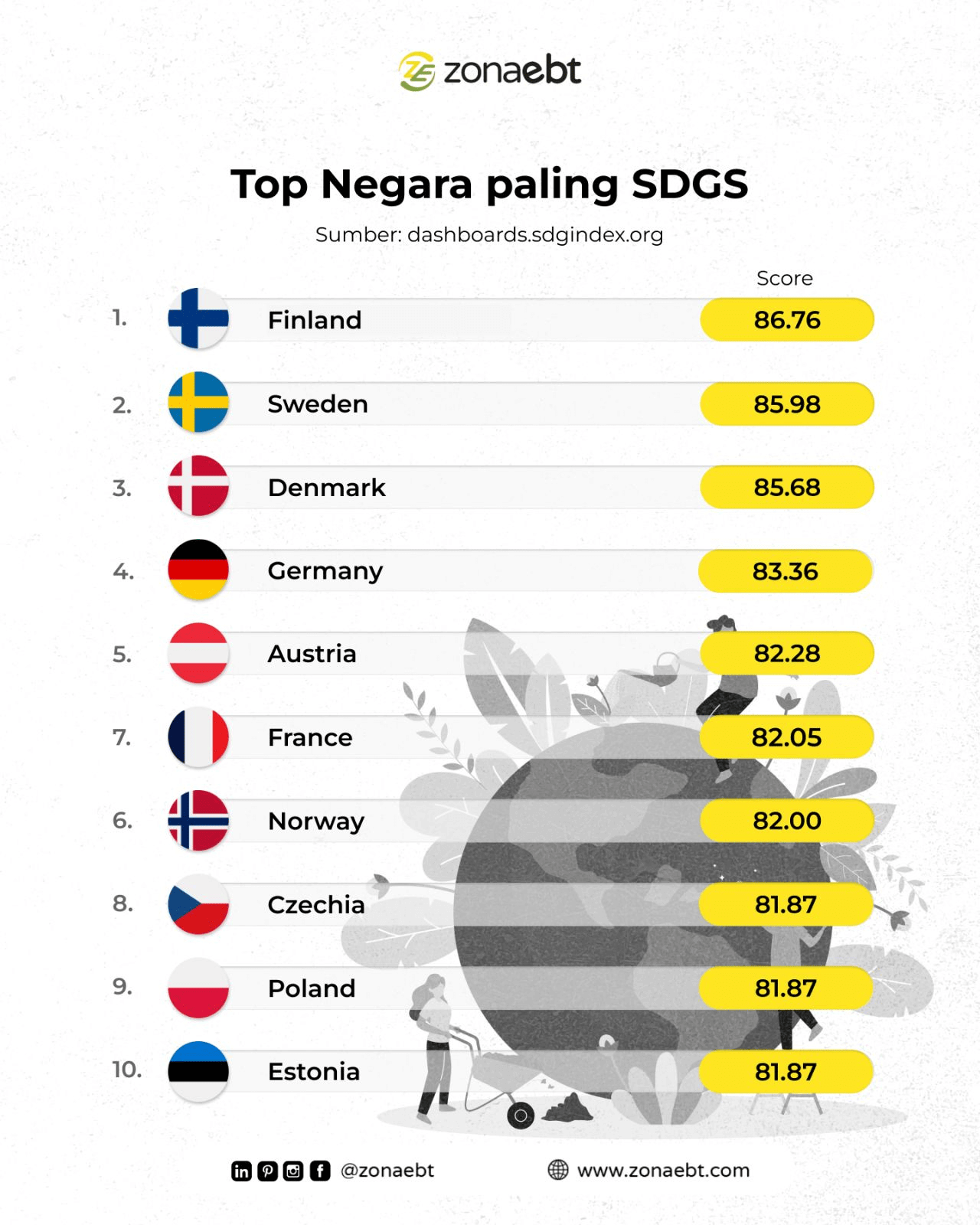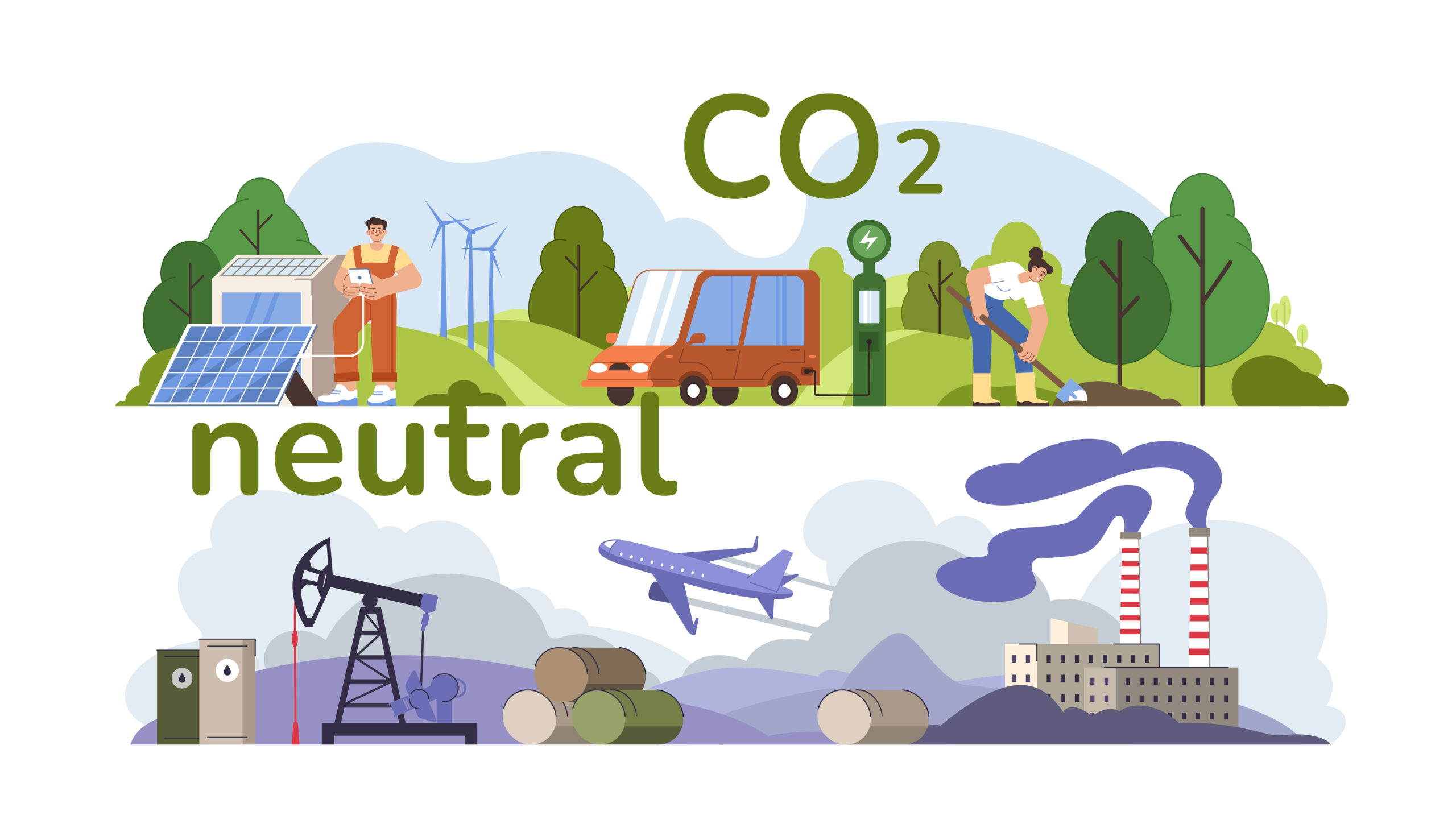
- 24% of SDGS environmental pillar performance requires special attention.
- Reducing carbon emissions is one of the indicators used to assess the environmental pillar.
- Green industry plays a role in reducing carbon emissions with green industry certification.
Did you know that the Sustainable Development Goals (SDGs) assessment is based on four pillars: social, economic, environment, legal and governance. Based on the assessment of 224 SDGs achievement indicators, the countries with the highest scores are Finland, Sweden, Denmark, and other countries as shown in the picture above. Finland, the country with the highest SDGs score, has set a goal of becoming a carbon-neutral country by 2035 and ultimately the world’s first fossil fuel-free welfare society. Of course, this goal can be a role model for other countries, especially in the implementation of the SDGs.
As one of the countries that signed the SDGs document, Indonesia is committed to achieving 169 SDGs targets. This commitment is evidenced by the achievement of 62% of the total targets that can be evaluated at the end of 2023. According to the United Nations, Indonesia’s achievements are the most progressive among upper middle income countries. Moreover, Indonesia is also ranked fourth in Southeast Asia with the highest SDGs score of 70.16.
Nevertheless, there are still 24% of achievements in the environmental pillar that require special attention. One of them is the reduction of carbon emissions. The industrial sector is one of the sectors that contribute 23% of the total carbon emissions. Therefore, the industrial sector also plays a role in the efforts to reduce carbon emissions, which is realized by the existence of a green industry.
Reducing Carbon Emissions with Green Industry Certification

Green industry is an industry that pays attention to environmental issues and strives to reduce its negative impact on the environment. The government aims to transform the industrial sector into a green industry through green energy transition to reduce carbon emissions and achieve net-zero emissions. The implementation involves the use of renewable energy such as hydropower, wind power and solar power. As the image above shows, an industry that uses solar energy.
Baca juga
- Pertamina: Berkomitmen dalam Transisi Energi Hijau melalui Kolaborasi Injeksi Karbon
- PLN: Produksi Hidrogen Hijau Sebagai Upaya Mewujudkan Net Zero Emission
There are two strategies in creating a green industry, namely greening the existing industry (greening the brown industry) and creating new industries with green industry principles (developing the new green industry). Industries that are committed to reducing carbon emissions are characterized by having a green industry certificate.
At present, many industries or companies are aware of the importance of green industry certification. According to the Ministry of Industry, from 2017 to 2022, there are 71 companies that have met the green industry standards.
Industries Committed to Reducing Carbon

Various industries such as rubber, fertilizer, dairy, paper and others have received Green Industry certification. The aspects of technical standards evaluated by the green industry are raw materials, energy, water, production processes, products, waste management, and carbon emissions. Here are some of the companies that have received Green Industry certification.
- PT Riau Andalan Pulp and Paper (APRIL)
Baca juga
This company in the paper industry managed to reduce carbon emissions to 0.53% tons of CO2/ ton of pulp.
- Hasilkan Banyak Emisi Karbon Shell Dikecam Penggiat Iklim
- Perjalanan Emisi CO2 Penduduk Indonesia Selama 20 Tahun Terakhir: Tren Fluktuatif dan Implikasinya
- PT Solusi Bangun Indonesia Tbk
This company in the cement industry uses alternative fuels to reduce carbon emissions and achieved an 18% reduction from the 2009 baseline.
- PT Pupuk Kalimantan Timur
This fertilizer company uses pricepalm technology or precision fertilization technology on oil palm plantations using satellite imagery. This program is also expected to reduce GHG emissions by 1.49 tons CO2eq in 2019.
- PT Sari Husada Generasi Mahardika
Greenhouse gas emissions are reduced with the movement to reduce energy consumption. By reducing energy consumption, CO2 emissions can be reduced. Replacing fuel oil with natural gas also plays a role. In addition to reducing CO2, the use of Freon for air conditioning has been replaced with materials that do not contain greenhouse gasses.
Green Industry Certification Benefits

Sobat EBT Heroes, it turns out that there are many benefits that companies receive when they have a green industry certification. Here are some of the benefits:
- Increased profitability (resource efficiency)
- Improved corporate image
- Improve company performance
- Increased industry competitiveness
- Regulatory flexibility
- Create new market opportunities
- Maintain environmental functions
So that’s it, my Sobat EBT Heroes. The more companies that pass the Green Industry Certification, the greater carbon emissions that will be suppressed and certainly the achievement of the SDGs Environmental Pillar to reduce carbon emissions and net zero emission in 2060 can be achieved.
Let us know if your dream company already has a green industry certification.
#zonaebt # sebarterbarukan #ebtheroes
Editor: Alvin Pratama
Referensi
[1] Sertifikasi Industri Hijau
[2] Capaian SDGS Indonesia Paling Progresif
[3] Hari Pengurangan Emisi Karbon CO2 Internasional Dukung Capaian SDGS
[4] SDGS Rankings



Comment closed